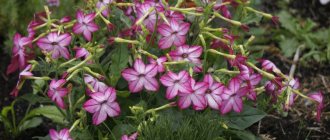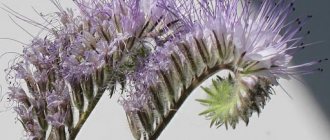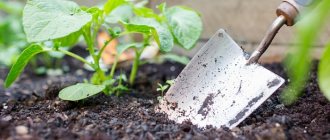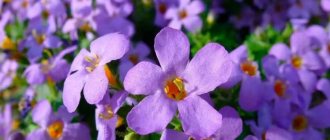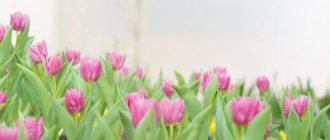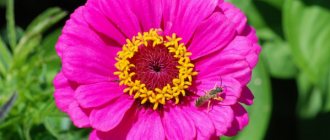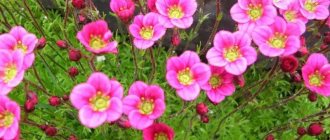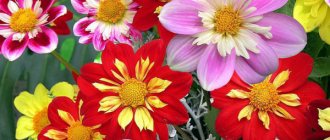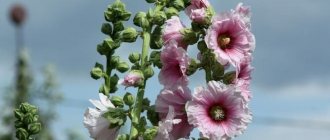Numerous indoor plants not only have a decorative task of decorating our interior according to our taste preferences, but, and everyone knows this from school years, they enrich our air environment in apartments and institutions with their daily photosynthesis.
Contemplation of indoor plants pacifies, improves mood, occupies leisure time, and gives creative impulses to collectors. Many people are familiar with that creative itch when they encounter a new plant or see it in a photo, on a computer or TV screen. And then the task arises of obtaining a shoot or seeds for propagation of the favorite specimen of indoor flora.
Someone will say: what’s the problem - now everything can be purchased in shopping centers or at the market, and finally, you can order it via the Internet - they will send you any seeds. And at this stage, the lover can expect disappointment, which this article is intended to avoid. It is not enough to sow the resulting seeds in pots with soil and wait for healthy shoots; you need to know how to sow, how to moisten, and how long it will take for seedlings to appear that need proper care.
It is very important, at the very first steps, to learn everything about the most decorative house plant that you like, about the features of its growing season and propagation using seeds.
Features of seed propagation of indoor plants
At first glance, there is nothing simpler, and the seeds are usually inexpensive. You can buy seeds of the most exotic plants, cuttings of which cannot be sent by mail due to the risk of damage during transportation. Postal delivery of light bags with them will not present any particular difficulties - you just need to place an order.
So in theory, but in practice “surprises” are possible. Those who have encountered this can tell you about some of the pitfalls: are the seeds the right ones, what is their freshness and ability to germinate. Even seeds purchased in a store in the appropriate packaging may be from the series: “Don’t believe your eyes.” In addition, it takes quite a long time to grow the selected plant - cuttings are much faster. For example, a banana from a cutting in a home culture will bear fruit in the second year, and from seeds - in the third or fourth.
Even if you have the opportunity to collect seeds from plants you like, you need to consider whether this is a hybrid variety. Such seeds can sprout with unpredictable results due to the loss, most often, of varietal characteristics.
Pros and cons of seed propagation
Perhaps the advantages of this method are obvious:
- Seeds are sold everywhere and are very inexpensive;
- You can get a rare, exotic plant that is not found everywhere. The variety of species and varieties sold in seed form is amazing;
- Unlike cuttings, which are easily damaged during transportation, weightless bags can easily travel in simple postal parcels.
There seem to be no problems - order seeds of any indoor plants from the online store and grow them for your own joy. Unfortunately, this is not entirely true:
- Seeds are a pig in a poke. Until the indoor flower sprouts and grows, it is very difficult to understand whether the seller was deceived. It happens that instead of luxurious exotics, ordinary weeds sprout.
- In addition, unscrupulous sellers often put fewer seeds in a bag than indicated on the package;
- Another problem is the shelf life. Old seeds will either not germinate at all, or their germination rate will be much lower;
- The duration of seed germination and the production of an adult home plant from them is much longer than the time of rooting of cuttings. And beautifully flowering and fruiting specimens later form flowers and ovaries. The timing can differ very significantly - for example, a homemade banana grown from a shoot will bear fruit in the second year of life, and a banana obtained from seeds only in the third or fourth year.
[!] There is no point in collecting seeds from a hybrid plant yourself. As a rule, varietal qualities are lost.
Houseplants grown from seeds
Theoretically, all plants capable of flowering can be propagated from seeds , but the method of such propagation can sometimes be so labor-intensive that it is not worth wasting time and experiencing failure. We will give you a list of indoor plants, the propagation of which by seeds at home will not cause any particular difficulties. These include: abutilone, asparagus, balsam, dracaena, crossandra, pelargonium, shefflera.
Plants that take a long time to sprout from seeds include the following species: Browallia, Washingtonia, Nolina, cyclamen of various subspecies and some varieties of palm trees. The mistake of inexperienced gardeners is the opinion that the seeds do not germinate, and they stop waiting for sprouts.
Note that certain types of indoor flora place increased demands on the freshness of seeds. For this reason, it is better not to deal with expired seeds at all. This applies primarily to such capricious ones as adenium, gardenia, hibiscus, coffee tree and murraya. And it is almost impossible to obtain seed material from bougainvillea, cacti, myrtle and fuchsia.
Preparing seeds for planting
Instant sowing of only purchased or collected seeds is not allowed, since they must initially undergo preliminary preparation for this process.
Depending on the characteristics of the variety of houseplant being grown, the following procedures can be applied:
- Almost all seeds need soaking. This process is aimed at increasing their humidity, stimulating respiratory processes and ensuring the beginning of growth. For these purposes, pre-boiled water is used; the recommended temperature is at least +25 – +30°C. If seeds with a thick shell are used, then several days are allotted for the procedure with periodic water changes to achieve swelling of the planting material. Before sowing, the seeds must be thoroughly dried.
- Barbation is a very effective preparation method, which involves placing planting material in an aquatic environment artificially enriched with oxygen. To do this, the selected container is filled with clean water, after which a compressor, which is usually used for aquariums, is immersed in it. The seeds are pre-wrapped in burlap or gauze, which does not interfere with water circulation. The container volume should be no more than a liter, otherwise the effectiveness of the procedure will be significantly lower.
- Pickling is a mandatory preparation step that must be carried out after soaking or sparging. You can powder the planting material with dry fungicides or treat them with a 1% potassium permanganate solution. All such manipulations should be carried out exclusively outside or in a well-ventilated area; the seeds will be ready for planting after 2 days.
Procedures such as warming or hardening are in most cases practiced when planting fruit-bearing crops, the seedlings of which are transplanted into open ground after some time; they are not necessary for indoor plants.
Table of germination time of seeds of popular indoor plants
| Name of house plants | Fast germination from 4 to 12 days | Average germination from 12 to 17 days | Slow germination over 20 days |
| Ambutilone - Kanatnik | ✔ | ||
| Adenium | ✔ | ||
| Agave | ✔ | ||
| Balsam | ✔ | ||
| Begonia | ✔ | ||
| Washingtonia | ✔ | ||
| Gardenia | ✔ | ||
| Hibiscus | ✔ | ||
| Indoor pomegranate | ✔ | ||
| Crassula | ✔ | ||
| Oleander | ✔ | ||
| Pelargonium | ✔ | ||
| Sansevieria | ✔ | ||
| Streptocarpus | ✔ | ||
| Fatsia | ✔ | ||
| Date palm | ✔ | ||
| Hamerops palm | ✔ | ||
| Cyclamen | ✔ |
Proven methods for growing indoor plants from seeds at home
The entire process of seed propagation of indoor plants is divided into several steps: selection and storage in optimal conditions, preparatory processing of seed material, selection of soil and containers, sowing time, sowing of prepared seeds, correct care of sowing and seedlings. We will explain the entire technology in these steps:
You immediately need to decide on the location of their future growth: on the windowsill or in the open ground of the front garden. If there is open ground for planting, you should first of all take into account climatic conditions, hybrid properties and the correct sowing plan. It’s easier with indoor plants, but there are also certain rules:
- Let's start with a manufacturer and even a seller who you can trust due to their positive reputation. Feedback from flower growers on suitable forums will help you verify this. It is known from practice that a Russian manufacturer can be trusted - here they treat quality more responsibly than, for example, their Chinese colleagues, from whom you can either receive something that is not what you ordered, or an empty bag. Inexperienced people are attracted by the low price, which comes with a high probability of disappointment.
- It is very important to initially consider the growing conditions and growth volume of your chosen indoor plant. If, for example, it is intended for a small room, then palm seeds and some varieties of hibiscus should not be purchased;
- for north-facing window sills, it is better to choose shade-tolerant representatives of indoor plants, which is certainly indicated in their vegetative characteristics, which can be found on Wikipedia;
- The determining conditions for growing a full-fledged indoor plant are, in addition to the area of the room, its seasonal temperature and humidity;
- You should not purchase seeds of indoor plants for future use, because they are quite difficult to properly store and protect from mold. The storage location should be dry, cool and dark;
When is the best time to sow
The timing of sowing seeds depends on the characteristics of the selected plant, but all of them can be divided into certain groups, for which the same planting rules will apply:
- Seeds with a long germination period must be sown as early as possible, usually in January or early February. This rule applies to all varieties of palms, cyclamen, bauhinia, tamarind and most conifers.
- Seeds that germinate quickly enough can be planted in March and April, this applies to tamarind, large-flowered sesbania, hibiscus, antigonon and others. It is not recommended to practice early planting, since the first shoots will appear quite quickly and will immediately begin to experience a lack of light and heat, which will negatively affect their development and survival.
- Aquilegia and other varieties that bloom quite early and quickly can be planted in May.
In some situations, seeds can be sown at any other time of the year, but the growing technology will be much more complex. It will be necessary not only to create, but also to constantly maintain the conditions necessary for their growth and development.
When growing in autumn or winter, it is always necessary to organize additional lighting, which will consist of installing special phytolamps.
Pre-sowing preparation of indoor plant seeds
Just before sowing or germination, purchased seeds should be soaked in one of the well-proven bioactive solutions:
- “Potassium humate”, “Sodium humate” - in 0.01% aqueous solution for 24 hours;
- “Zircon” - 1 drop per 150 milliliters of water - for 12 hours;
- "Epin" - 2 drops per 100 milliliters of water - for 24 hours
Experience shows that soaking seeds before sowing in artificial biostimulants allows them to germinate and develop much faster with high survival rates.
There are also supporters of natural growth stimulants. These include potato juice, honey, aqueous solution of ash and aloe juice:
- ash - water infusion of 2 tablespoons of ash in 1 liter of water, soaking for 4 hours;
- aloe juice - aqueous solution in a 1:1 ratio, soaking for 24 hours;
- honey - an aqueous solution of 1 teaspoon of honey in 1 glass of water, soaking for 5 hours.
- potato juice - from several tubers, frozen in the freezer and thawed, squeeze the juice, soak for 8 hours.
A widely used home method is to disinfect seeds before sowing with a pink solution of potassium permanganate (potassium permanganate). Soaking should not last more than 15 minutes and should be completed by washing the seeds under running water. There are also unique ways of pre-sowing soaking in orange or lemon juice, in paste and even vodka.
Basic rules for sowing seeds of indoor plants
So, everything is prepared: processed and slightly dried seeds, suitable shallow boxes with a drainage bottom, purchased or formed planting soil for seedlings, glass or a transparent plastic bag. Place a drainage layer on the bottom of the box, usually made of expanded clay; I personally prefer eggshells, fearing the acid reaction of expanded clay. Place soil on top and moisten it with warm water to its entire depth.
Seeds are buried at a rate of two to three times the depth, and plants such as gloxinia and adenium are simply distributed on the surface of the soil. The best results for any form of sowing are obtained by a mini greenhouse, for which you place glass on the box or insert the entire box into a transparent bag, the top of which is tucked under the box. In both cases, there is no need to water in the next 3-4 days and the hatched seedlings will be clearly visible.
It remains to provide an even warm temperature not lower than +20 C, and from the moment of germination - sufficient lighting. As soon as shoots become noticeable, remove the glass or bag and water only by irrigation so that the soil does not crack. It is undesirable to place the box on a heater battery for heating - it is dangerous due to overheating and death of the seedlings.
It is necessary to decide on the lighting standard. Seeds such as adenium, dionaea, eustoma will germinate only in bright sunlight, while cyclamens require darkness for germination. If germination takes place in a greenhouse (under glass or film), then a periodic “walk” is required - the box is opened for 15 minutes (once a day). Do not allow the soil to dry out.
How to sow indoor flowers
Compliance with planting technology is also an important condition for the growth and development of seedlings that will be obtained from seeds. All the basic rules associated with this process are discussed in detail below:
- The soil already placed in the container must be pre-moistened.
- Small seeds do not need to be buried in the ground, as this minimizes the chances of germination. It will be enough to simply lay them out on the surface of the earth.
- All planting material is laid out in even layers , after which it is re-moistened using a spray bottle.
- The top of the container is covered with plastic film or glass , which will help preserve and maintain a sufficiently warm and humid microclimate.
- Watering will not be required until the first seedlings appear , since the planting material can be fed by the resulting condensate.
- Seeds of medium size are sown using a similar technology , but they require deepening into the soil by approximately 1 - 2 mm.
- Large planting material should be buried 1–2 cm into the ground.
- If the soil dries out after planting the seeds, it can be slightly moistened with a spray bottle. At the same time, care must be taken to ensure that too much condensation does not form, as this will indicate an excessively high level of humidity inside.
Caring for indoor plant seedlings
After the sprouts appear and they reach one and a half centimeters in height, open the closing part of the greenhouse, increasing the time of their “walk” so that the seedlings adapt to the external environment in 2-3 days.
To avoid lodging of seedlings, you can attach a support to them or add soil, as if to hill them up. When a pair of true leaves are reached, the seedlings can be picked (transplanted) into separate small pots.
Before transplanting, moisten the soil in the box in order to remove the seedlings for planting them in small pots with suitable planting soil with the least trauma to the roots.
When diving, use only strong and healthy specimens, discarding weak and unpromising ones. You need to remove them from the ground using a spatula in order to injure the root system of the plants as little as possible. As soon as the plants have formed into seedlings, they can once again be placed in a larger pot by transferring and adding soil, and then by transferring them into the main container, where it will develop into an adult plant.
Although it is not so easy to grow your favorite plant from a seed , it is, so to speak, gestation, when you get the embodiment of your floral dream in certain pains, be proud of yourself and admire this living green and blooming beauty, to the birth of which you have a direct connection . If you don’t know what kind of flower you want to see on your windowsill, try choosing from the list of plants that are mascots of the zodiac signs. Good luck in green creativity and home gardening!
What soil to use
The choice of suitable soil is another important process on which the likelihood of seedling germination will depend.
Different plants have individual soil preferences, but the following general guidelines are recommended:
- For most indoor flowers, a standard substrate is suitable, which can be obtained by mixing peat and sand in equal quantities. Such soil is considered favorable for germinating virtually any seed.
- It is allowed to add vermiculite to the soil , but its volume should not be more than a quarter of the total amount of soil.
- Some varieties can be germinated in pure vermiculite or river sand. There are no nutrients in such soil, so this technique is suitable mainly for plants that can easily tolerate replanting.
Regardless of the type of soil chosen, it will need to be disinfected first. To do this, the substrate is subjected to heat treatment; the easiest and most affordable way is to place it in the oven or microwave.
It is recommended to then allow the soil to settle for 2–3 months; this period will be sufficient for the reappearance of beneficial bacteria and restoration of the microflora.

